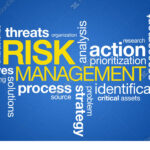In today’s complex and fast-paced business environment, risk management has become a critical component for organizations aiming to achieve their objectives and maintain resilience. By proactively identifying, assessing, and managing risks, businesses can protect themselves from potential losses, ensure compliance with regulatory requirements, and enhance their overall decision-making processes. But why exactly is risk management so important? Let’s delve into some of the key reasons.
1. Protecting Organizational Assets
Risk management plays a crucial role in safeguarding an organization’s assets, including its people, intellectual property, financial resources, and reputation. By identifying potential risks, such as cyber threats, operational failures, or legal liabilities, businesses can implement strategies to mitigate or eliminate these risks, thereby protecting their most valuable assets.
Example: In the wake of increasing cyberattacks, many organizations are adopting robust cybersecurity measures as part of their risk management strategy. According to a report by Cybersecurity Ventures, cybercrime is predicted to cost the world $10.5 trillion annually by 2025 . Without effective risk management, companies could suffer severe financial losses, reputational damage, and even business failure.
Canadian Perspective: A report by the Canadian Centre for Cyber Security emphasizes the importance of cybersecurity risk management, noting that 71% of Canadian businesses reported cyber incidents in 2021, resulting in an estimated loss of over CAD 3 billion .
2. Ensuring Compliance with Regulatory Requirements
Organizations across various industries are subject to a myriad of regulations and standards that govern their operations. Non-compliance with these regulations can result in hefty fines, legal penalties, and damage to the organization’s reputation. Risk management helps businesses stay ahead of regulatory requirements by ensuring that they identify and address compliance-related risks in a timely manner.
Example: The General Data Protection Regulation (GDPR) in Europe imposes strict requirements on how organizations handle personal data. Companies that fail to comply with GDPR can face fines of up to €20 million or 4% of their global annual turnover, whichever is higher . By incorporating compliance risks into their risk management processes, organizations can avoid such costly penalties.
U.S. Perspective: In the United States, the Sarbanes-Oxley Act (SOX) mandates stringent financial reporting requirements for publicly traded companies. Non-compliance can lead to severe penalties, including fines and imprisonment. A study by Protiviti found that 68% of U.S. organizations have integrated SOX compliance into their broader risk management framework to avoid such consequences .
3. Enhancing Decision-Making
Effective risk management provides decision-makers with a clearer understanding of the potential risks and opportunities associated with various business activities. This enables them to make informed decisions that align with the organization’s risk appetite and strategic objectives. By considering risk in the decision-making process, businesses can avoid or minimize the impact of negative outcomes while also capitalizing on opportunities for growth and innovation.
Example: A company considering entering a new market might conduct a thorough risk assessment to evaluate potential economic, political, and operational risks. Based on the findings, the organization can decide whether to proceed with the expansion, delay it, or explore alternative markets.
Canadian Perspective: The Chartered Professional Accountants of Canada (CPA Canada) emphasizes the role of risk management in strategic decision-making, noting that it helps businesses navigate economic uncertainties and identify growth opportunities in a competitive landscape .
4. Fostering a Risk-Aware Culture
Embedding risk management into the organizational culture helps create a risk-aware workforce where employees at all levels are vigilant and proactive in identifying and addressing risks. A risk-aware culture promotes open communication about potential threats, encourages collaboration in developing solutions, and supports continuous improvement in risk management practices.
Example: Financial institutions, such as banks, often implement extensive risk management training programs for their employees to foster a risk-aware culture. This not only helps in preventing fraud and compliance violations but also enhances the organization’s ability to respond quickly to emerging risks .
U.S. Perspective: According to the Risk Management Association (RMA) in the U.S., fostering a risk-aware culture is critical in financial institutions. It ensures that employees understand the importance of risk management and are empowered to act on potential risks before they escalate .
5. Improving Operational Efficiency
By identifying and mitigating risks, organizations can streamline their operations and reduce disruptions that could negatively impact productivity. Risk management helps in identifying inefficiencies, bottlenecks, and potential points of failure, allowing businesses to optimize their processes and ensure smooth operations.
Example: A manufacturing company that identifies supply chain risks, such as dependency on a single supplier, can take proactive measures to diversify its suppliers or develop contingency plans. This reduces the likelihood of production delays and ensures that the company can meet its delivery commitments to customers.
Canadian Perspective: The Conference Board of Canada highlights that effective risk management can lead to significant improvements in operational efficiency, particularly in industries like manufacturing and energy, where supply chain disruptions can have a major impact on business continuity .
6. Strengthening Stakeholder Confidence
Effective risk management can enhance the confidence of stakeholders, including investors, customers, employees, and regulators. By demonstrating a proactive approach to managing risks, organizations can build trust and credibility, which is essential for long-term success.
Example: Investors are more likely to support companies that have a strong risk management framework in place. A study by the CFA Institute found that 68% of investors consider risk management as a key factor in their investment decisions .
U.S. Perspective: A report by Deloitte in the U.S. indicates that organizations with robust risk management practices are more likely to attract and retain investors, as they demonstrate resilience and a commitment to sustainable growth .
Conclusion
In conclusion, risk management is not just a regulatory requirement or a defensive strategy; it is a vital component of business success. By protecting assets, ensuring compliance, enhancing decision-making, fostering a risk-aware culture, improving operational efficiency, and strengthening stakeholder confidence, effective risk management enables organizations to navigate the uncertainties of today’s business environment with greater confidence and resilience.
As businesses continue to face new and evolving risks, the importance of risk management will only grow. Organizations that prioritize and invest in robust risk management practices will be better positioned to achieve their strategic objectives, mitigate potential losses, and seize opportunities for growth.
References:
- Cybersecurity Ventures. (2022). Cybercrime To Cost The World $10.5 Trillion Annually By 2025. Retrieved from Cybersecurity Ventures
- Canadian Centre for Cyber Security. (2021). National Cyber Threat Assessment. Retrieved from Canadian Centre for Cyber Security
- European Commission. (2018). EU GDPR Fines. Retrieved from European Commission
- Protiviti. (2020). SOX Compliance Survey. Retrieved from Protiviti
- CPA Canada. (2020). Enterprise Risk Management. Retrieved from CPA Canada
- Risk Management Association (RMA). (2019). Building a Risk-Aware Culture. Retrieved from RMA
- The Conference Board of Canada. (2021). Risk Management and Operational Efficiency. Retrieved from Conference Board of Canada
- Deloitte. (2022). Investor Confidence and Risk Management. Retrieved from Deloitte
- CFA Institute. (2019). Investor Trust Study. Retrieved from CFA Institute









